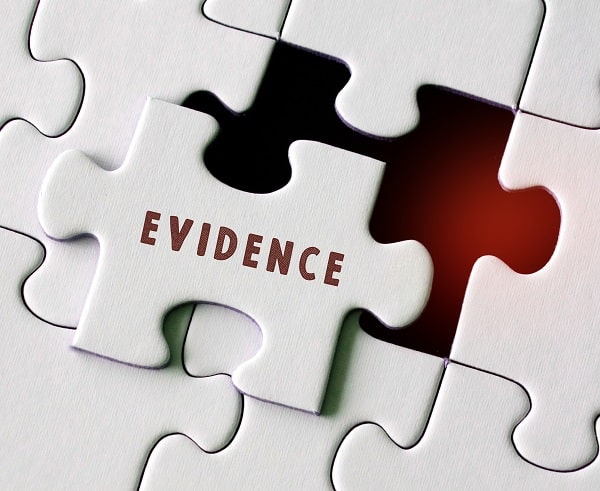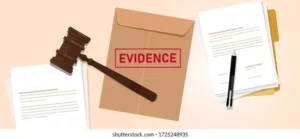INTRODUCTION.
A Court decides a case on only admissible evidence tendered and admitted before it. When parties and their Counsel prepare for trial, they make a checklist of the documents they intend to rely on and examine the admissibility of these documents. Some of these documents are public documents. A Public document is a vital document in discharging an evidential burden in litigation, hence proof of the contents of a public document is important. Section 102 of the Evidence Act, 2011 provides what a public document is, and proof of such public documents is done by either by producing the document itself, that is the original copy (primary evidence, see section 86 of the Evidence Act, 2011) or by producing a certified true copy of the public document (secondary evidence, see Sections 87(a), 89(e) and 90(1)(c) of the Evidence Act, 2011).
When the original copy of the public document is in the possession of the party, there is no problem, however, when it is not, parties encounter difficulty in getting a certified true copy. Some of these difficulties range from the expense in certifying the documents, the delay in getting the document certified from the government institution which delays the trial of the case, and in worse case scenarios refusal to certify the document by the government institution. These creates some legal problems for parties and their Counsel. In finding a solution to the problem of getting a certified true copy, trial lawyers tender a photocopy of a certified true copy or subpoena the government official, and in cases of a trial by affidavit evidence or interlocutory applications, canvassed the argument that the document forms part of the affidavit so doesn’t need to be certified. These legal ingenuities have sometimes been rejected by the Court.
ANALYSIS OF THE DECISIONS OF THE COURT.
In the case of a photocopy of a certified true copy, there are conflicting authorities on whether such is admissible. The two leading authorities on this issue are the Supreme Court’s decision in Minister of Lands, Western Nigeria v. Dr Azikiwe (1969) ALL NLR 49 at 59 and Magaji v. Nigerian Army (2008) 8 NWLR (Pt 1089) 338 S.C. While the former stated that a photocopy of a certified true copy is not admissible in evidence, the latter stated that it is admissible. The ratio in Minister of Lands v. Azikiwe is that by the combined interpretation of the provisions of Sections 96(1)(e), (2)(c), 108 of the Evidence Act, 1945 now Sections 89(e) (f), 90(1)(c) and 102 of the Evidence Act, 2011 respectively, only a duly certified true copy of a public document is admissible in evidence and none other. While the ratio in Magaji v. Nigerian Army is that on the authority of Daily Times v. F.R.A Williams (1986) 4 NWLR (Pt 36) 536 and Iheonu v. Obiukwu (1994) 1 NWLR (Pt 332) 594 once a photocopy of a certified true copy has on the face of the document, all the requirements needed in Section 104 of the Evidence Act, 2011 (i.e., the name, seal, signature & title of the officer that certified the document and proof of payment of legal fees) the document ought to be taking judicial notice of pursuant to section 122(1), (2)(e) and (j) hence admissible in evidence.
Until this issue is revisited and confirmed by the Supreme Court, it would be risky for a Counsel to tender a photocopy of a certified true copy in evidence as the trial Court may rule either way. Counsel may also pray to the Court to return the document for recertification in the interest of justice if the Court is of the opinion that a photocopy of a certified true copy is not admissible in evidence. The Court in carrying out its duty to do substantial justice can order the documents to be recertified, see Tablik Investment Limited v. GTB (2011) 17 NWLR (Pt 1276) 240.
The other mode where the government official in possession of the document is subpoenaed has also hit a brick wall, which is the narrow interpretation of section 90(1)(c) of the Evidence Act, 2011 by the Supreme Court in Araka v. Egbue (2003) 17 NWLR (Pt 848) 1. The facts of the case were that the Appellant’s witness testified that he was representing the Principal Secretary to the Executive Governor of Enugu State who was subpoenaed to tender documents in the court. After laying the necessary foundation that the original of the public document is lost, went on to tender the evidence wherein an objection was raised because it was not certified. The trial Court overruled the objection and admitted it into the evidence. The Court of Appeal set aside the ruling, holding that only a certified true copy is admissible notwithstanding that the original public document is lost so there is no way it could be certified.
On further appeal to the Supreme Court, the Appellant argued that section 97(2)(c) [now section 90(1)(c)] should be interpreted to accommodate a situation where the original of a public document is lost and cannot be found or destroyed and is no longer in existence. The apex Court rejected the argument and stated that the phrase ‘no other secondary evidence is admissible’ in section 97(2)(c) means that it is only under that section that a secondary evidence of a public document can be admissible in evidence and no other section of the Evidence Act.
This narrow interpretation will cause a lot of problems. In view of current realities, an example is the vandalization and arson on the Lagos division of the High Court of Lagos State and the Lagos Magisterial District of the Magistrate Court of Lagos State. A lot of vital documents were burnt making it difficult if not impossible to obtain the certified true copy of those public documents. In another scenario, what if the public institution who has custody of such a document is also the adverse party whom the evidence is intended to be proved against. The public institution can simply state that the document is lost or cannot be found. What this means is that it cannot be admissible under Section 89(a) (i) &(ii) of the Evidence Act, 2011. That is injustice! It does not accord with the duty of the Court to do substantial justice. Where the literal interpretation of a statute will lead to injustice, the Court is meant to explore other rules of interpretation of statutes. See Ugwu v. Ararume (2007) 12 NWLR (Pt. 1048) 365. It is impermissible to construe sections in isolation. See Marwa and Ors v. Nyako (2012) 6 NWLR (Pt 1296) 199 (SC), Elelu-Habeeb v. A-G, Federation (2012) 12 NWLR (Pt 1318) 423; I.N.E.C. v. Musa [2003] 3 NWLR (Pt. 806) 72, 102; A.T. Ltd. v. A.D.H. Ltd [2007] 15 NWLR (Pt. 1056) 118, 166-167. The phrase ‘no other secondary evidence is admissible’ should not be interpreted in isolation. A holistic interpretation should be resorted to in order to arrive at the intention of its framers. Marwa and Ors v. Nyako (supra).
The proper interpretation of section 90(1)(c) is that it does not exclude other events where the document can be admissible. A case where such an interpretation was given is in Anagbado v. Faruk (2019) 1 NWLR (Pt 1653) 292 S.C where the Supreme Court held a document that was meant to be in law a public document as a private document on the fact that it was tendered and admitted without objection by the opposing party. Contrast against Onwuzuruike v. Ezodiem (2016) 6 NWLR (Pt 1508) 215 S.C where it was held as a public document.
The rigid and narrow interpretation by the Court in Araka v. Egbue may not stand the test of time and ought to be revisited by the Supreme Court.
In cases of a trial by affidavit evidence or interlocutory applications, the usual argument canvassed is that the document forms part of the affidavit so doesn’t need to be certified. This has received judicial validation in the cases of B.A.T Nig. Ltd v. Int Tobacco Co. Plc (2013) 2 NWLR (Pt 1339) 493 C.A and Ilorin East Local Govt. v. Alasinrin & Anor. (2012) LPELR-800. However, this is not a blanket authority to circumvent the need to certify a public document. The Supreme Court’s decision in Fawehinmi v. I.G.P (2000) 7 NWLR (Pt 665) S.C 525 is that under section 97 of the old Evidence Act (now section 90) there is no distinction in proceedings instituted by other processes other than writ of summons and those instituted by writ of summons, hence only a certified true copy of the public document attached to the affidavit will be admissible if the document seeks to prove the truth of a particular deposition in the affidavit. While in Jukok International Limited v. Diamond Bank Plc (2016) 6 NWLR (Pt 1507) 106-107 it was held that if the public document is not in dispute it need not be certified.
CONCLUSION.
The rationale for only a certified true copy of a public document being admissible as a secondary evidence is to verify the authenticity of such documents. However, each case should be treated on its own peculiar fact, so the general rule in section 90(1)(c) should accommodate some exceptions under other sections of the Evidence Act. If the facts of the case are not peculiar, then the general rule should be applied.

Adewale Sontan is a legal practitioner and has a keen interest in dispute resolution. He is a Counsel in various litigation proceedings involving corporate institutions, individuals and government agencies. He can be contacted via sontanadewale@gmail.com


